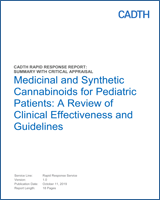 “It has been hypothesized that besides its intraocular pressure (IOP) lowering potential, tetrahydrocannabinol (THC) may also improve ocular hemodynamics.
“It has been hypothesized that besides its intraocular pressure (IOP) lowering potential, tetrahydrocannabinol (THC) may also improve ocular hemodynamics.
The aim of the present study was to investigate whether single oral administration of dronabinol, a synthetic THC, alters optic nerve head blood flow (ONHBF) and its regulation in healthy subjects.
The study was carried out in a randomized, placebo-controlled, double-masked, two-way crossover design in twenty-four healthy subjects. For each study participant, two study days were scheduled, on which they either received capsules containing 5mg dronabinol or placebo. ONHBF was measured with laser Doppler flowmetry at rest and while the study participants performed isometric exercise for six minutes to increase mean arterial blood pressure (MAP). This was repeated one hour after drug intake. Ocular perfusion pressure (OPP) was calculated as 2/3MAP-IOP.
Dronabinol was well tolerated and no cannabinoid-related psychoactive effects were reported.
Neither administration of dronabinol nor placebo had an effect on IOP, MAP or OPP. In contrast, dronabinol significantly increased ONHBF at rest by 9.5±8.1% whereas placebo did not show a change in ONHBF (0.3±7.4% vs. baseline, p<0.001 between study days). Dronabinol did not alter the autoregulatory response of ONHBF to isometric exercise.
In conclusion, the present data indicate that low dose dronabinol increases ONHBF in healthy subjects without affecting IOP, OPP or inducing psychoactive side effects. In addition, dronabinol does not alter the autoregulatory response of ONHBF to an experimental increase in OPP. Further studies are needed to investigate whether this effect can also be observed in glaucoma patients.”
https://www.ncbi.nlm.nih.gov/pubmed/31977076
https://ascpt.onlinelibrary.wiley.com/doi/abs/10.1002/cpt.1797

 “Tetrahydrocannabinol (THC), cannabidiol (CBD) and cannabinol (CBN) affect the human endocannabinoid system.
“Tetrahydrocannabinol (THC), cannabidiol (CBD) and cannabinol (CBN) affect the human endocannabinoid system. “The
“The 
 “In traditional medicine, Cannabis sativa has been prescribed for a variety of diseases. Today, the plant is largely known for its recreational purpose, but it may find a way back to what it was originally known for: a herbal remedy. Most of the plant’s ingredients, such as Δ-tetrahydrocannabinol,
“In traditional medicine, Cannabis sativa has been prescribed for a variety of diseases. Today, the plant is largely known for its recreational purpose, but it may find a way back to what it was originally known for: a herbal remedy. Most of the plant’s ingredients, such as Δ-tetrahydrocannabinol,  “This study evaluated the potential of combined cannabis constituents to reduce nausea.
“This study evaluated the potential of combined cannabis constituents to reduce nausea. “Epilepsy is a chronic disease characterized by recurrent unprovoked seizures. Up to 30% of children with epilepsy will be refractory to standard anticonvulsant therapy, and those with epileptic encephalopathy can be particularly challenging to treat.
“Epilepsy is a chronic disease characterized by recurrent unprovoked seizures. Up to 30% of children with epilepsy will be refractory to standard anticonvulsant therapy, and those with epileptic encephalopathy can be particularly challenging to treat. “(-)-Trans-Δ9-tetrahydrocannabinol (Δ9-THC) is the main compound responsible for the intoxicant activity of Cannabis sativa L. The length of the side alkyl chain influences the biological activity of this cannabinoid. In particular, synthetic analogues of Δ9-THC with a longer side chain have shown cannabimimetic properties far higher than Δ9-THC itself. In the attempt to define the phytocannabinoids profile that characterizes a medicinal cannabis variety, a new phytocannabinoid with the same structure of Δ9-THC but with a seven-term alkyl side chain was identified. The natural compound was isolated and fully characterized and its stereochemical configuration was assigned by match with the same compound obtained by a stereoselective synthesis. This new phytocannabinoid has been called (-)-trans-Δ9-tetrahydrocannabiphorol (Δ9-THCP). Along with Δ9-THCP, the corresponding
“(-)-Trans-Δ9-tetrahydrocannabinol (Δ9-THC) is the main compound responsible for the intoxicant activity of Cannabis sativa L. The length of the side alkyl chain influences the biological activity of this cannabinoid. In particular, synthetic analogues of Δ9-THC with a longer side chain have shown cannabimimetic properties far higher than Δ9-THC itself. In the attempt to define the phytocannabinoids profile that characterizes a medicinal cannabis variety, a new phytocannabinoid with the same structure of Δ9-THC but with a seven-term alkyl side chain was identified. The natural compound was isolated and fully characterized and its stereochemical configuration was assigned by match with the same compound obtained by a stereoselective synthesis. This new phytocannabinoid has been called (-)-trans-Δ9-tetrahydrocannabiphorol (Δ9-THCP). Along with Δ9-THCP, the corresponding  “Palliative care is defined by the World Health Organization as “an approach that improves the quality of life of patients and their families facing the problem associated with life-threatening illness…”. The last days and hours of a person’s life can be associated with immense physical as well as emotional suffering Relief of pain and other distressing symptoms, and enhancement of quality of life, are among the essential elements of good palliative care. Palliative care could benefit an estimated 69% to 82% of dying individuals in Canada. As Canada’s population ages, with increasing prevalence of chronic conditions and treatments resulting in prolonged life, it is expected that there will be an increased need for palliative care services.
“Palliative care is defined by the World Health Organization as “an approach that improves the quality of life of patients and their families facing the problem associated with life-threatening illness…”. The last days and hours of a person’s life can be associated with immense physical as well as emotional suffering Relief of pain and other distressing symptoms, and enhancement of quality of life, are among the essential elements of good palliative care. Palliative care could benefit an estimated 69% to 82% of dying individuals in Canada. As Canada’s population ages, with increasing prevalence of chronic conditions and treatments resulting in prolonged life, it is expected that there will be an increased need for palliative care services. “Cannabinoids are pharmacologically active agents extracted from the cannabis plant.
“Cannabinoids are pharmacologically active agents extracted from the cannabis plant.